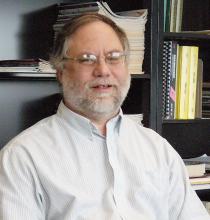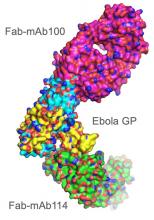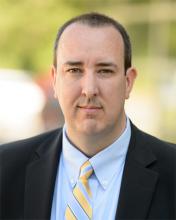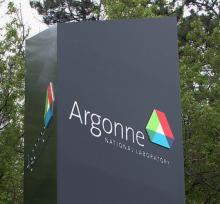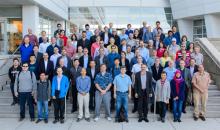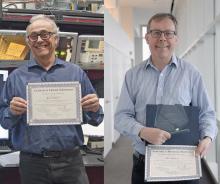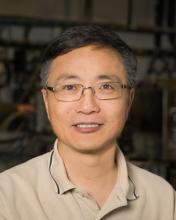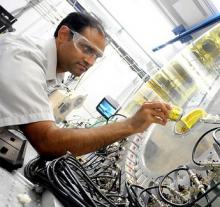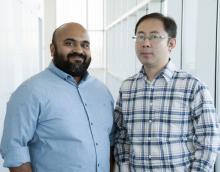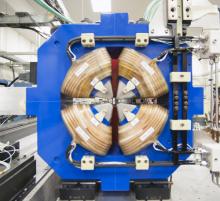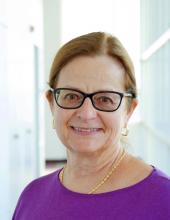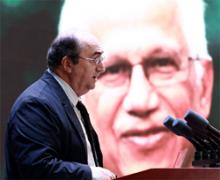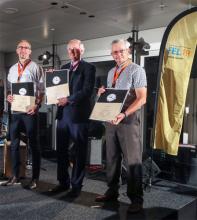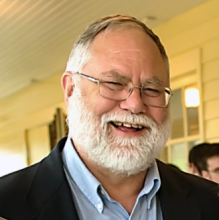2019
Mark Beno joins the more than 400 new 2019 members of the American Association for the Advancement of Science who “have earned the lifetime distinction of AAAS Fellow, in honor of their invaluable contributions to science and technology.” Dr. Beno passed away suddenly on August 24, 2019.
The ability to examine how specific antibodies react with the Ebola virus has led to the development of a promising drug with far higher survival rates. Scientists using specialized beamlines at Argonne’s Structural Biology Center (SBC-XSD), a facility for macromolecular crystallography at the APS, a DOE Office of Science User Facility, can examine molecular structures and interactions that could yield lifesaving medicines for various diseases.
The U.S. Department of Energy (DOE) announced the selection of John Connolly, Deputy Associate Lab Director for Operations of the Photon Sciences Directorate, and Director of the APS Engineering Support Division, for the Oppenheimer Science and Energy Leadership Program (OSELP). Connolly will join the fourth cohort of OSELP, a DOE program to develop the next generation of science and energy leaders.
(From an "Argonne Today" article)
With the use of advanced x-ray diagnostics, scientists have a better understanding of gas turbine combustor inlet conditions, which is critical for the design and development of engines for the next generation of Army aircraft. (U.S. Army CCDC Army Research Laboratory Public Affairs)
The awards recognize outstanding achievement in basic and applied science, exemplary service that has significantly contributed to Argonne fulfilling its missions and attaining its overall goals, and for achievements that significantly exceed normal requirements of an employee’s position, project assignment, and individual situation.
Accelerator scientists and engineers from U.S. Department of Energy national laboratories, universities, and other research laboratories gathered for an Electron-Ion Collider Accelerator Collaboration Meeting at the APS to discuss the varied proposals for an EIC, a multi-billion-dollar accelerator project that represents the future of particle accelerators for fundamental research into the nature of matter.
Scientists at the Army Research Laboratory and the U.S. Department of Energy's Argonne National Laboratory are using highly sensitive x-ray machines to study microstructures of the skull that are informing new military helmet designs. To date, it's the most detailed study of the human skull, according to Argonne, so we should expect better helmets to protect the tiny bones, as a result. (Popular Mechanics)
The human skull is extremely complex. To build helmets that protect it well, we need a detailed understanding of its structure and behavior.
The characteristics that truly set haute chocolate apart can be seen at the microscale thanks to pivotal research performed by researchers using the Advanced Photon Source.
Mark Rivers (The University of Chicago/Center for Advanced Radiation Sources) received the International Conference on Accelerator and Large Experimental Physics Control Systems Lifetime Achievement Award, and Andrew Johnson (Advanced Photon Source) was presented with the ICALEPCS Leadership in Mentoring Award.
Congratulations to the new Nobel laureates M. Stanley Whittingham, John Goodenough, and Akira Yoshino! The Department of Energy’s Office of Science is proud to have supported research by Whittingham and Goodenough.
His nomination and election attests to the high regard colleagues have for his scientific activities as he joins a distinguished group of individuals who have been recognized for their outstanding contributions to the fields of mineralogy, crystallography, geochemistry, and petrology.
Scientists are working to understand why and when lithium-ion batteries in phones and other applications lose charge or fail. One of the best tools in this investigation is x-rays from the Department of Energy's advanced light sources.
Cunming Liu and Niranjan Parab, postdocs in the APS X-ray Science Division, are among seven recipients of 2019 Argonne Postdoctoral Performance Awards.
Jim Kerby, APS Upgrade Chief Project Officer, will deliver an Argonne Out Loud talk on October 24, 2019, 7:00 PM – 8:00 PM, in the APS Conference Center.
"For tireless efforts to increase the participation of women and minorities in physics, especially through one-on-one mentoring and educating minorities in elementary school through college about opportunities in the field."
"In recognition of his outstanding contributions to the development of synchrotron radiation techniques and their scientific applications based on the Mössbauer effect."
"For his seminal, time-resolved measurements of dynamics in FEL oscillators and the elucidation of microbunching in relativistic electron beams and SASE FELs."
How do electrons arrange themselves in potential superconductors? Research at the APS counts the ways.
The Advanced Photon Source community is mourning the loss of Mark Beno, who passed away suddenly at the age of 68 on August 24, 2019.

